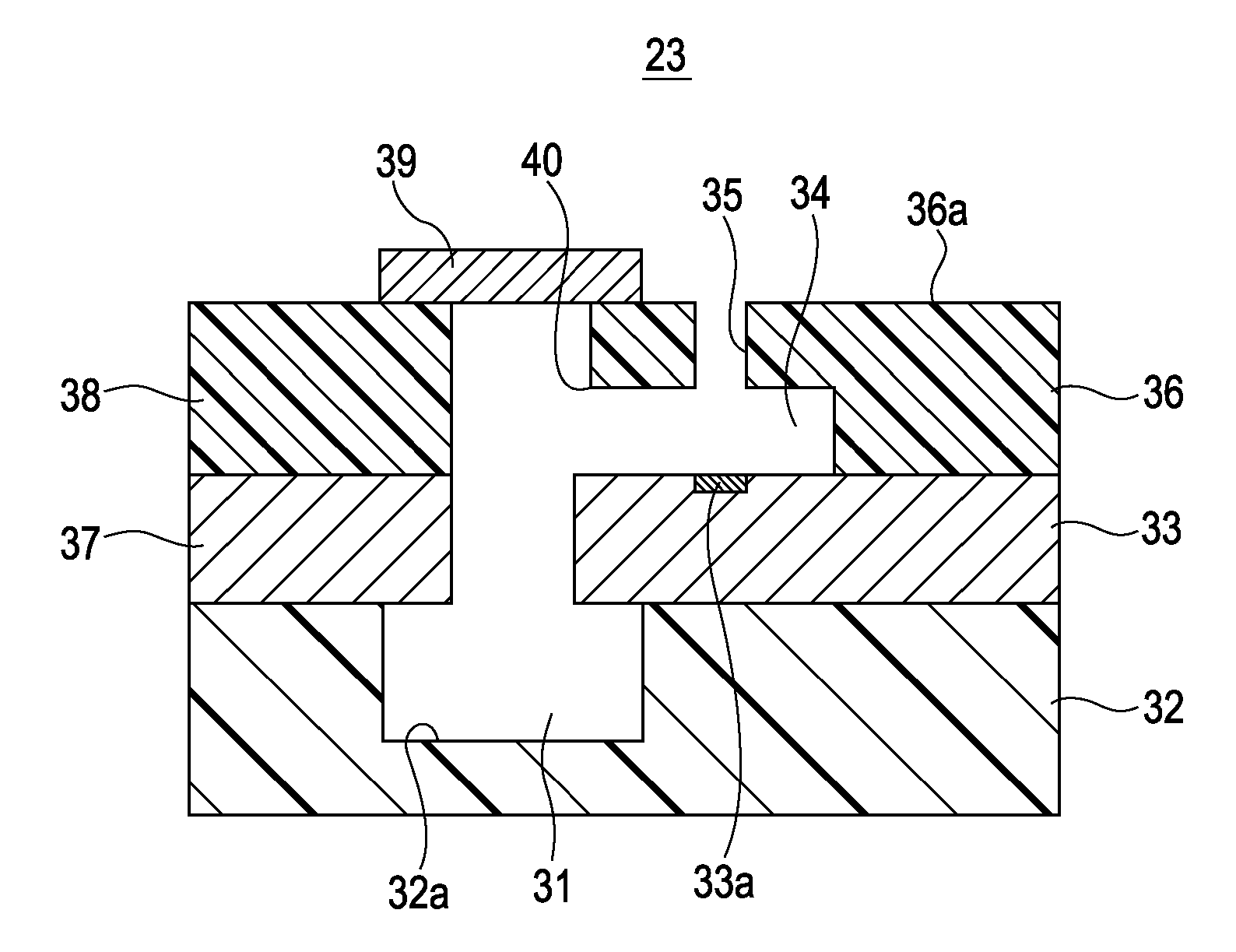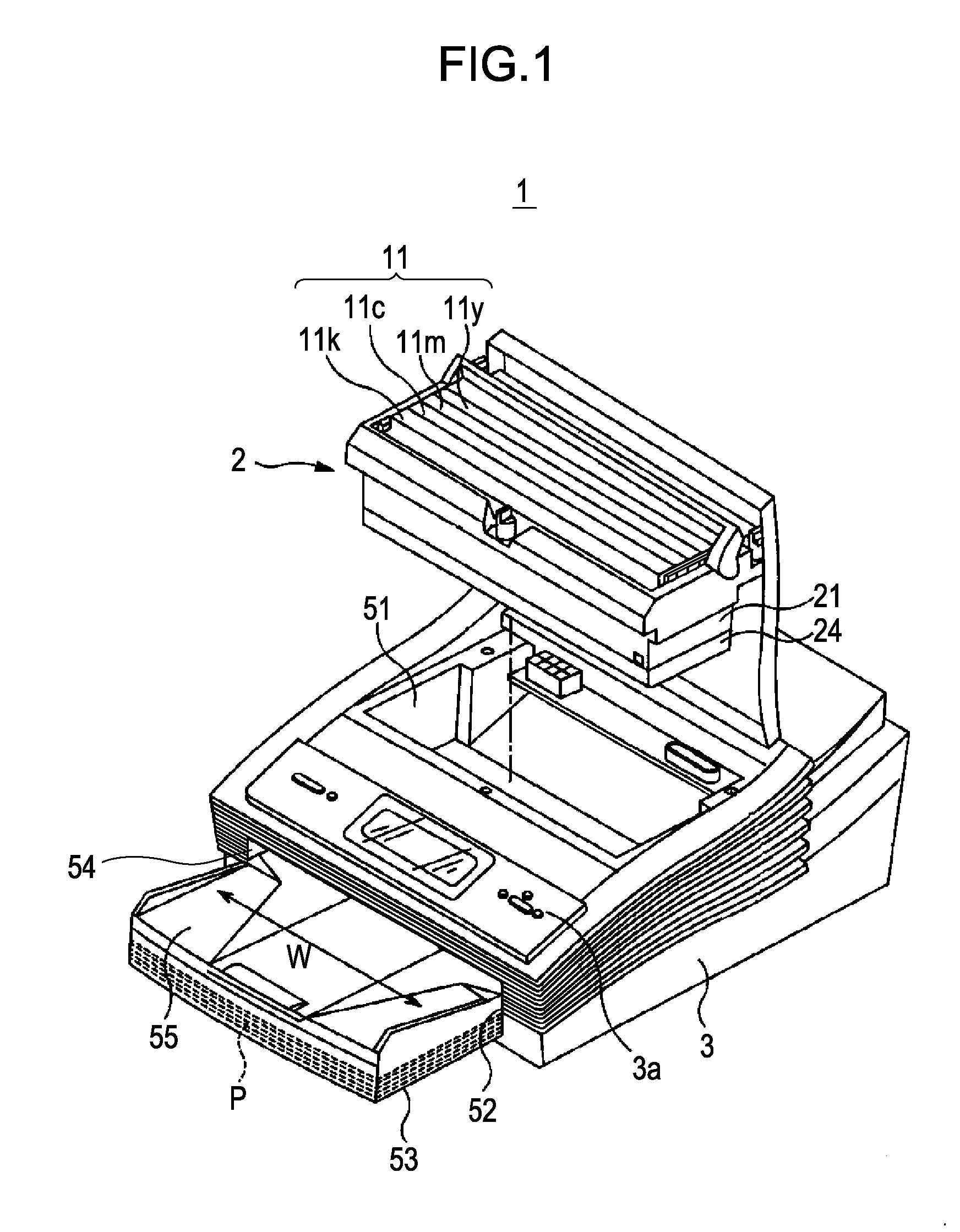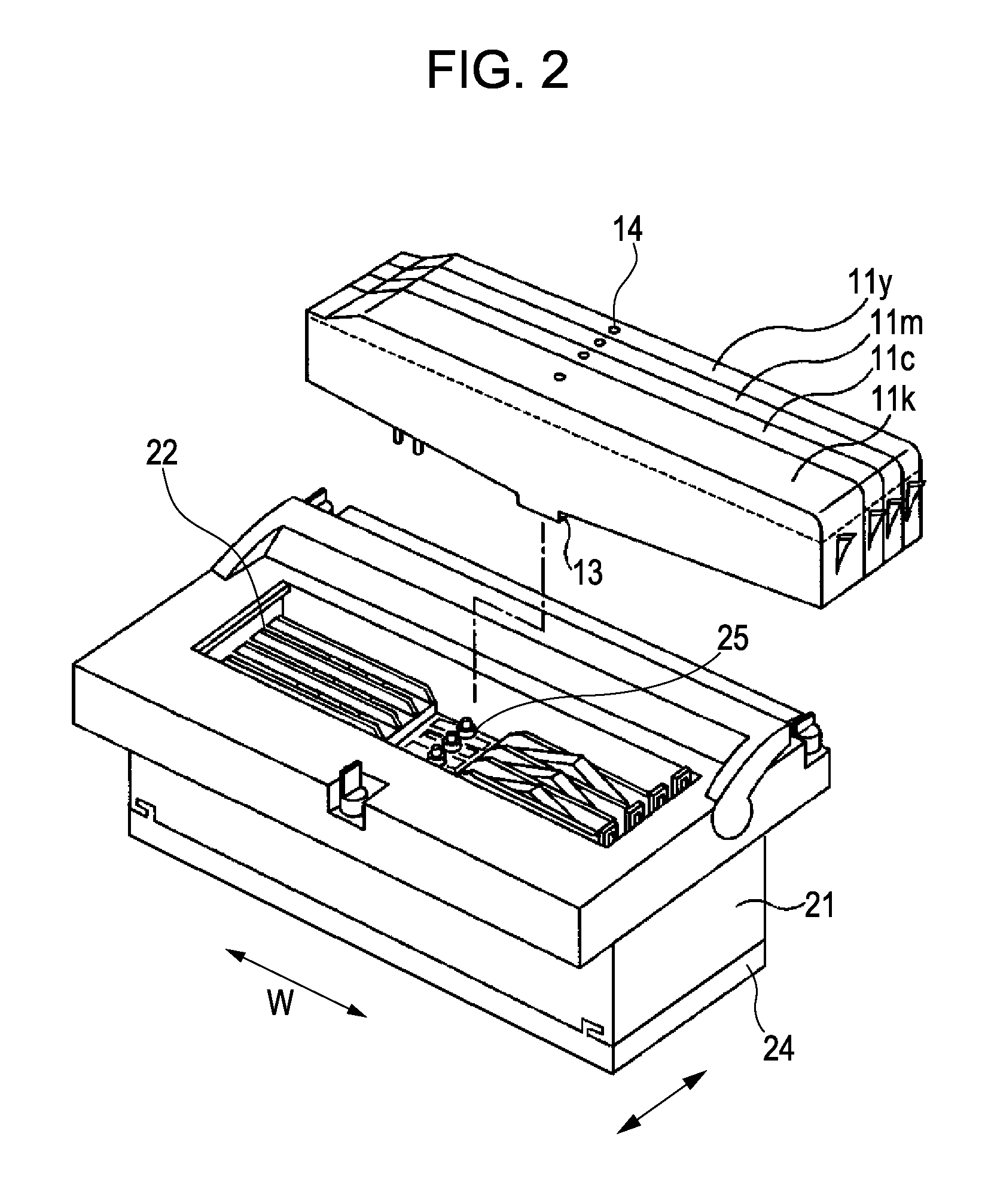Liquid discharge recording head and liquid discharge apparatus
a liquid discharge recording and liquid discharge technology, applied in printing and other directions, can solve the problems of difficult to realize high accuracy with such a mechanical device, difficult to perform the bonding process with the substrate having ink-discharge-pressure-generating elements, and difficult to produce uniform orifice plates, etc., to achieve excellent durability, reduce stress in the covering resin layer, and prevent crack generation
- Summary
- Abstract
- Description
- Claims
- Application Information
AI Technical Summary
Benefits of technology
Problems solved by technology
Method used
Image
Examples
example 1
[0123] In Example 1, a solution containing an oxetane resin composition shown in Table 1 was spin-coated on a wafer with a diameter of six inches. In this step, the solution was applied so that the layer after being pre-baked on a hot plate at 90° C. for five minutes had a thickness of 20 μm. The wafer was then exposed with a mirror projection aligner (MPA-600FA manufactured by Canon Inc.) at a light exposure of 1 J / cm2. The wafer was post-baked on a hot plate at 90° C. for five minutes, and was then cured at 200° C. for one hour to prepare a cured film of the oxetane resin composition.
TABLE 1Phenol-novolak-type oxetane compound100parts by weight(Average number of nuclei: 3)Photocationic polymerization initiator2parts by weight(SP-170: from Adeka Corporation)Silane coupling agent0.5parts by weight(2-(3,4-Epoxycyclohexyl)ethyltrimethoxysilane)Organic solvent100parts by weight(Petroleum naphtha, Ipsol 150: fromIdemitsu Kosan Co., Ltd.)
example 2
[0127] In Example 2, an ink-jet recording head 23 shown in FIG. 4 was produced as follows. First, on a first substrate 33 having a discharge-energy-generating element 33a shown in FIG. 7, for example, a positive-type resist that was mainly composed of a novolak resin (PMER-P-LA900PM manufacture by Tokyo Ohka Kogyo Co., Ltd.) was applied as a soluble resin layer. The positive-type resist was then pre-baked on a hot plate at 110° C. for six minutes. A pattern exposure of an individual flow path 34 was then performed with a mirror projection aligner (MPA-600FA) manufactured by Canon Inc. Thus, as shown in FIG. 8, an ink flow path pattern 41 was formed with the soluble resin layer at an area where the individual flow path 34 is formed. In this step, the light exposure was 800 mJ / cm2.
[0128] A dip development was performed with a P-7G special developer (3% TMAH (tetramethylammonium hydroxide solution)) to develop the resist, and the first substrate 33 was then rinsed with running pure wa...
PUM
 Login to View More
Login to View More Abstract
Description
Claims
Application Information
 Login to View More
Login to View More - R&D
- Intellectual Property
- Life Sciences
- Materials
- Tech Scout
- Unparalleled Data Quality
- Higher Quality Content
- 60% Fewer Hallucinations
Browse by: Latest US Patents, China's latest patents, Technical Efficacy Thesaurus, Application Domain, Technology Topic, Popular Technical Reports.
© 2025 PatSnap. All rights reserved.Legal|Privacy policy|Modern Slavery Act Transparency Statement|Sitemap|About US| Contact US: help@patsnap.com



